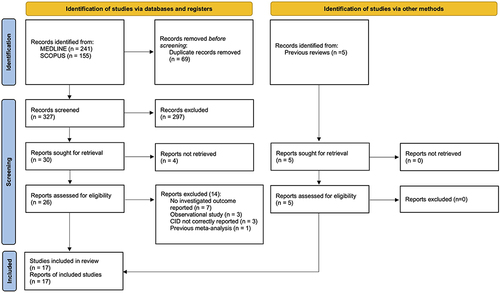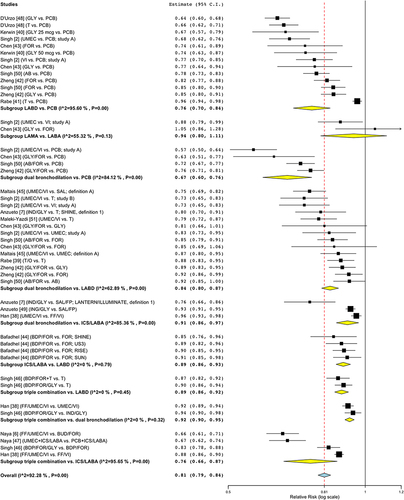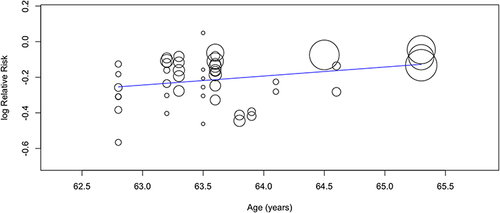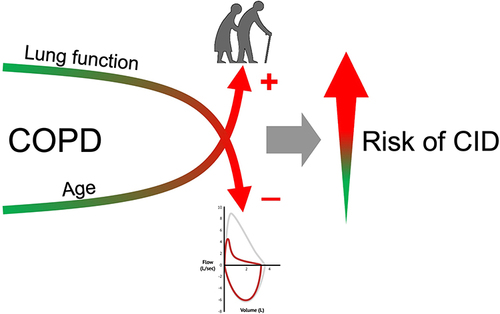Figures & data
Figure 1 PRISMA 2020 flow diagram for the identification of the studies included in the systematic review.

Table 1 Main Characteristics of the Studies Included in the Systematic Review and Meta-Regression Analysis
Table 2 Different CID Definitions Used in the Studies Included in the Systematic Review and Meta-Regression Analysis
Figure 2 Forest plot of meta-analysis concerning the impact of pharmacological treatment on the risk of CID in COPD.

Figure 3 Graphical representation of the meta-regression analysis for age with respect to the risk of CID.

Figure 4 Funnel plot (A) and graphical representations of Egger’s test (B).

Figure 5 CID risk increases in older patients with worse lung function.

